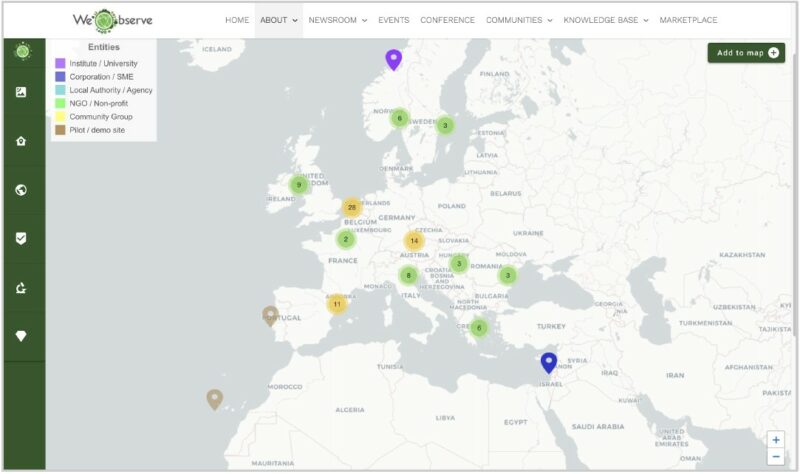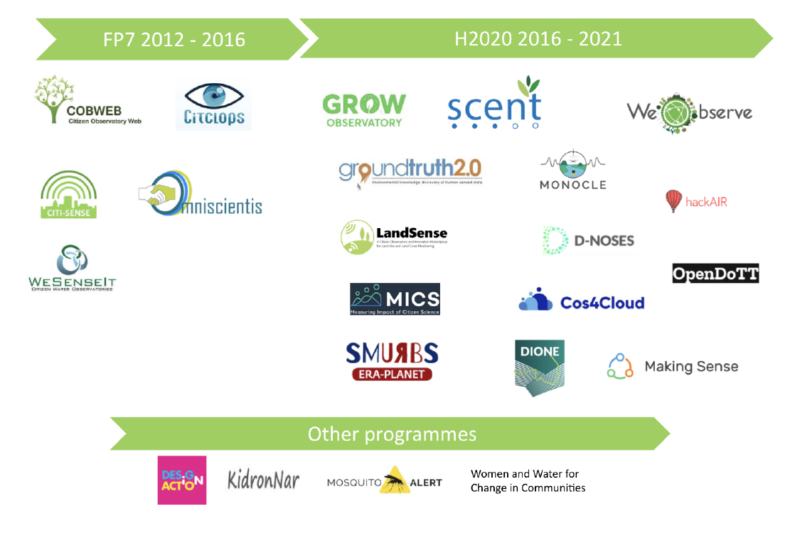Why is it relevant?
Citizen Observatories (also known as Citizens’ Observatories) have been around since the early 2010s. Many earlier initiatives can be characterised as Citizen Observatories, even if they did not use that term. There is therefore a sizable body of experience and examples that we can now learn from.
What is the history of Citizen Observatories?
Although Citizen Observatories have only existed under that name since the early 2010s, they have a rich and detailed history, which has resulted in the current Citizen Observatory landscape. Through various streams of funding, a wide variety of Citizen Observatories, focusing on various issues, have been set up over the past decades.
Useful Resources
PROJECT REPORTS: From our research into the EU Landscape of Citizen Observatories within the WeObserve project, we produced three reports: a report that outlines frameworks which can be used to describe and compare Citizen Observatories, a report on the insights from the experiences of Citizen Observatories, and a Roadmap report that sets the stage for future Citizen Observatories.
CONFERENCE PRESENTATION: “Lessons from the WeObserve project to strengthen awareness, acceptability and sustainability of Citizen Observatories in Europe” – Presentation at the virtual ECSA conference 2020.
CONFERENCE PRESENTATION: “New Community Activity on Citizens’ Observatories and Crowdsourcing” – Presentation at the Citizen GEOSS Workshop in St Petersburg (Russia), 8 November 2016, by José Miguel Rubio Iglesias.
You may also be interested in:
I want to understand what Citizen Observatories are…
This work by parties of the WeObserve consortium is licensed under a Creative Commons Attribution-ShareAlike 4.0 International License. ![]()


